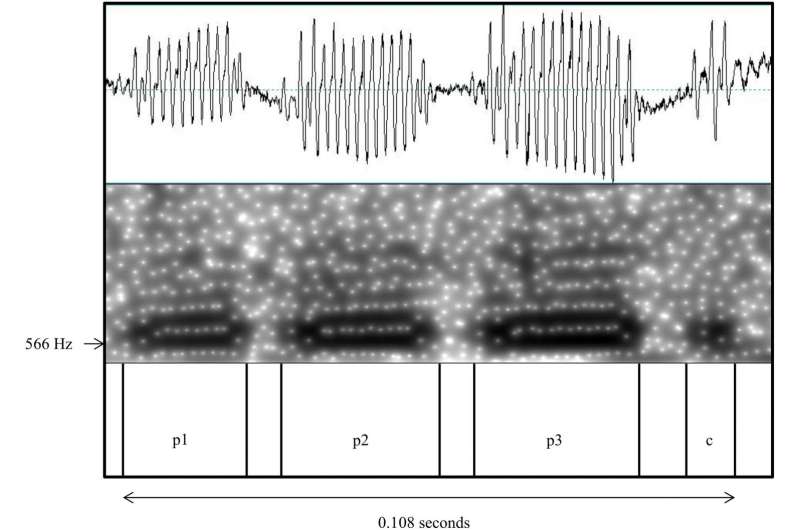The waveform (top) and spectrogram (middle) of a close call. Credit: Mausbach et al (2017)
Within a group of meerkats, call patterns vary with factors including sex, rank and reproductive season—but not with stress hormones, according to a study published May 3, 2017 in the open-access journal PLOS ONE by Jelena Mausbach from University of Zurich, Switzerland; Marta Manser from University of Pretoria, South Africa; and colleagues.
Meerkats live in family groups with social hierarchies, emitting contact calls that help maintain group cohesion during foraging. These calls are distinctive and have variable rates across individuals, but the influences on this behavior are unknown. To identify factors linked to call patterns, Mausbach, Manser and colleagues analyzed sound recordings and measured fecal stress hormones of 64 meerkats from 9 groups in the wild.
The researchers found that call patterns vary with factors such as sex, social status, and reproductive season, suggesting that meerkat calls within a family group provide listeners with cues about the producers.
For example, call rates were higher in dominant females and one-year-old males than in other individuals, and were up to five times more frequent during the reproductive season than during the non-reproductive season.
However, call patterns were not linked to stress hormones, and the researchers speculate that this may reflect the fact that the calls studied were emitted during the relaxed context of foraging.
More information: Mausbach J, Braga Goncalves I, Heistermann M, Ganswindt A, Manser MB (2017) Meerkat close calling patterns are linked to sex, social category, season and wind, but not fecal glucocorticoid metabolite concentrations. PLoS ONE 12(5): e0175371. doi.org/10.1371/journal.pone.0175371
Journal information: PLoS ONE
Provided by Public Library of Science






















